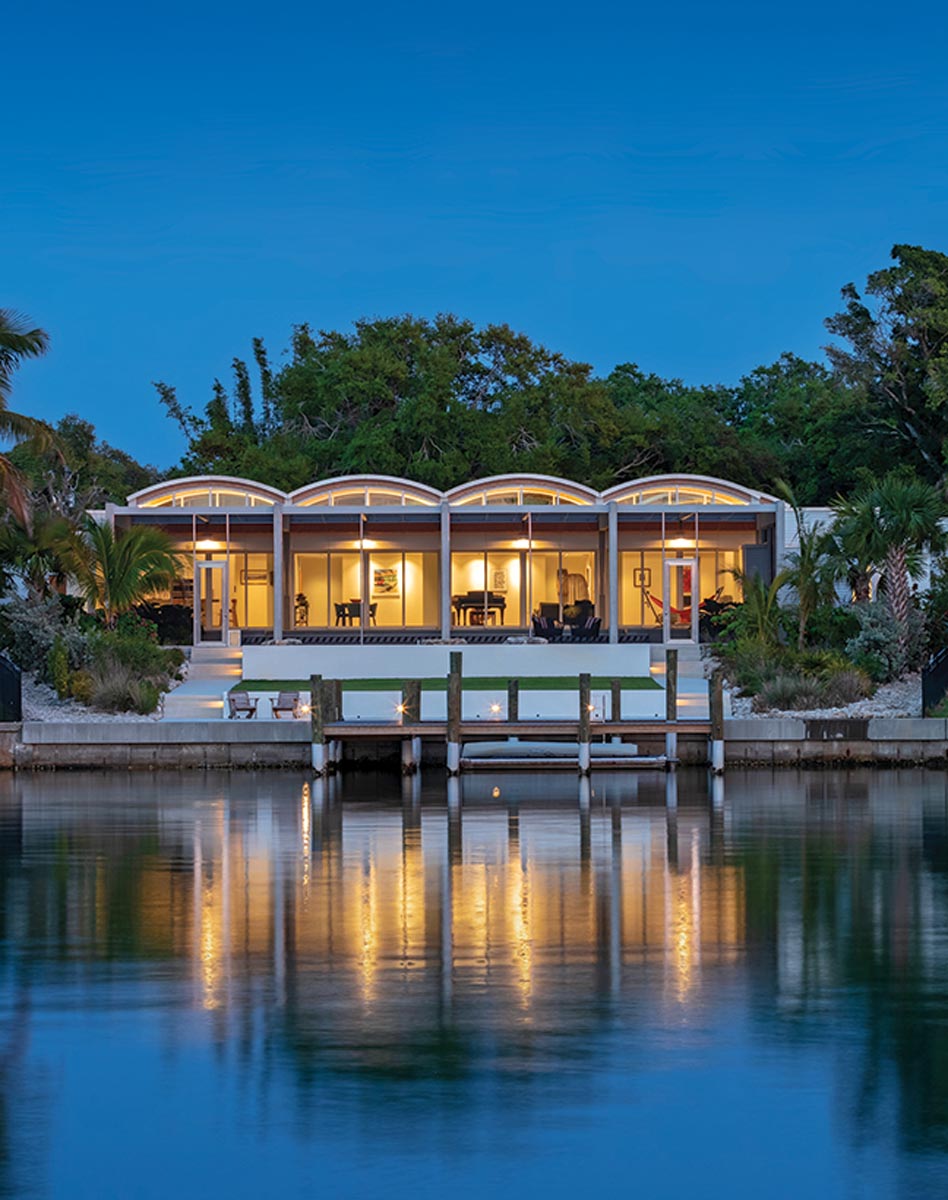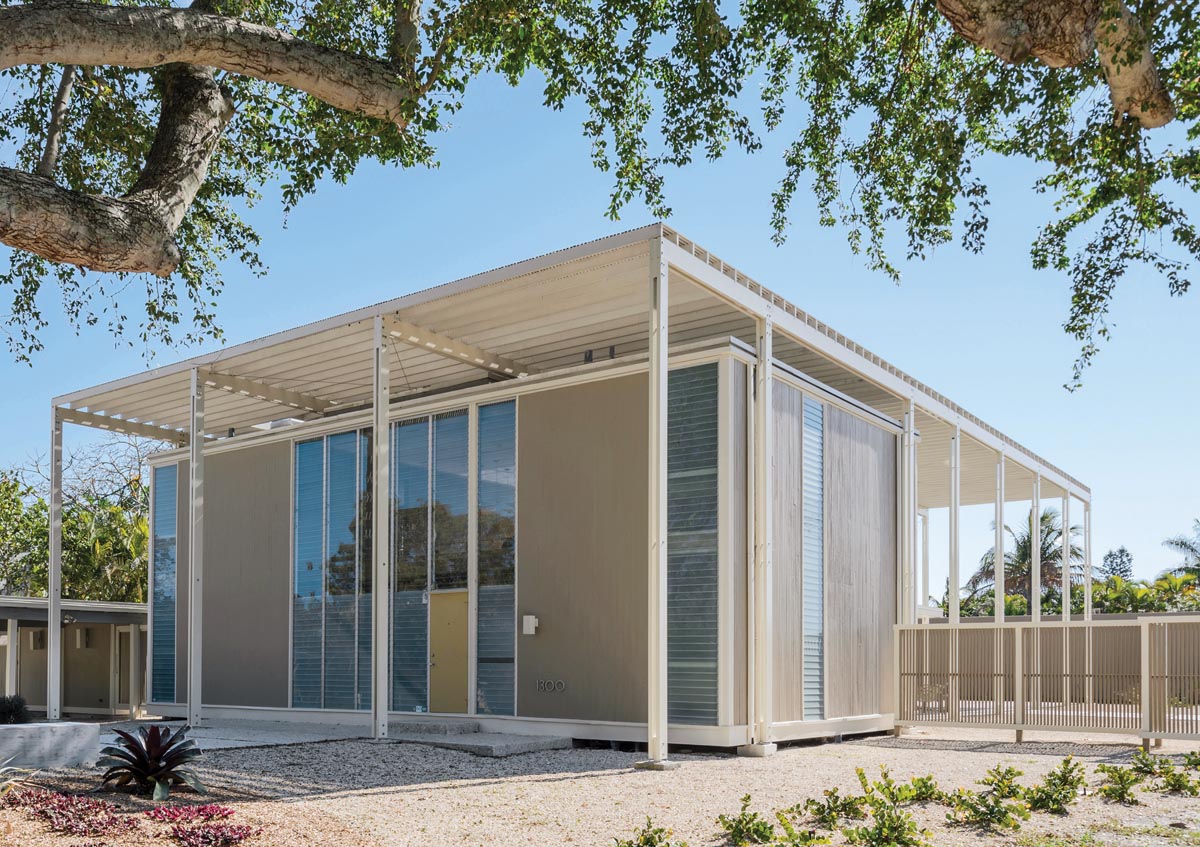The laid-back community of Sarasota staked a major claim in regional modernism between 1941 and 1966 with the cutting-edge Sarasota School of Architecture, a style that was designed specifically with the region’s climate and environment front of mind. These homes incorporate natural ventilation and sunshade systems, walls of glass, and durable, easy-to-maintain materials, such as concrete block and terrazzo. While living in harmony with Florida’s climate and landscape, the designs enhance the residents’ daily living experience through connection with sea, land, and sky, all the while protecting the inhabitants’ cherished privacy.
Today, this 81-year-old prototype for green design is simply called Sarasota Modern and—while it’s always been an honored part of Sarasota’s heritage—the movement is enjoying a resurgence in appreciation following many decades of Mediterranean Revival’s ubiquity in Florida.
“It’s just as valid today as it was then,” says architect Michael Epstein of Seibert Architects, a firm established in 1955 by Edward John “Tim” Seibert (an early leader within the movement) that’s responsible for structures such as the Schechter House, the Tetreault-Pirman Residence, and MHouse South, three prime examples of Sarasota Modern’s principles and aesthetics. “The biggest difference between then and now is in the materials that are used.”
Epstein obviously understands the renewed interest: “It should appeal to the younger generation because they’re not trying to grasp at memories from yesteryear,” he says. “There’s a lightness to being when you’re in one of these houses. You’re not sealed up in a box trying to see out of little holes. Being able to live in one is meaningful and can change your life.”
Enduring Appeal
Further proof of Sarasota Modern’s everlasting allure? Last year, the Sarasota Architectural Foundation and the Center for Architecture Sarasota merged to create Architecture Sarasota, headquartered at the McCulloch Pavilion (built in 1959 and listed on the National Register of Historic Places) in downtown Sarasota.
Architecture Sarasota coordinates the annual Mod Weekend (Nov. 11-13), a series of walking, kayaking, and trolley outings, exhibitions, lectures, and parties, as well as home tours of three prime examples of the Sarasota Modern movement on the Gulf Coast: Umbrella House in Lido Shores, and Healy Guest House and Revere Quality, both in Siesta Key. To Anne Marie Russell, executive director of Architecture Sarasota, Sarasota Modern is more than an architectural style: “It’s a way of being.”
Structure Pioneers
Although architects Paul Rudolph and Ralph S. Twitchell are considered the fathers of Sarasota Modern, there was a robust group of modernist architecture practitioners. Core principles were propelled by designer and developer Philip H. Hiss. He traveled to South America, the South Pacific, and Indonesia to learn “how indigenous people lived— they had to design in harmony with the environment: the light, wind, seasonal temperature changes, and precipitation,” says Russell, who also refers to Hiss’ approach as tropical modernism. He brought those ideas to Sarasota to share with other architects, some of whom relocated to far-away communities, spreading the philosophy along the way.
“Sarasota Modern is not just the buildings and structures in Sarasota,” says Russell. “Wherever you are in the world, building for your climate is essential, and the tropics are particularly relevant. [These] aesthetics [have] impacted the globe.”
Story Credits:
Text by Cathy Chestnut





















Facebook Comments